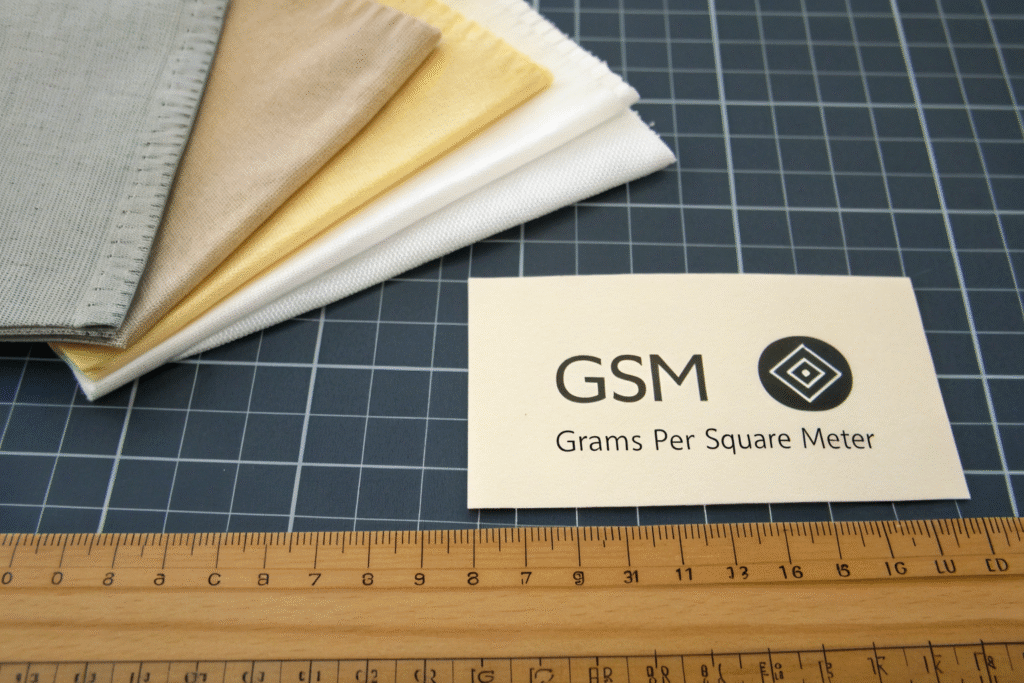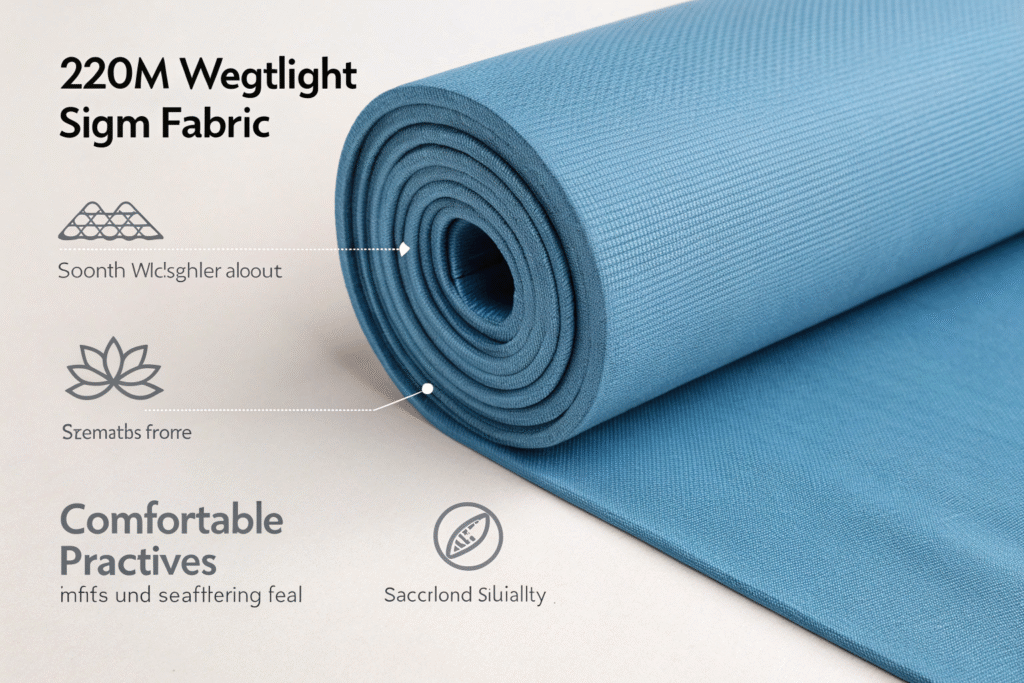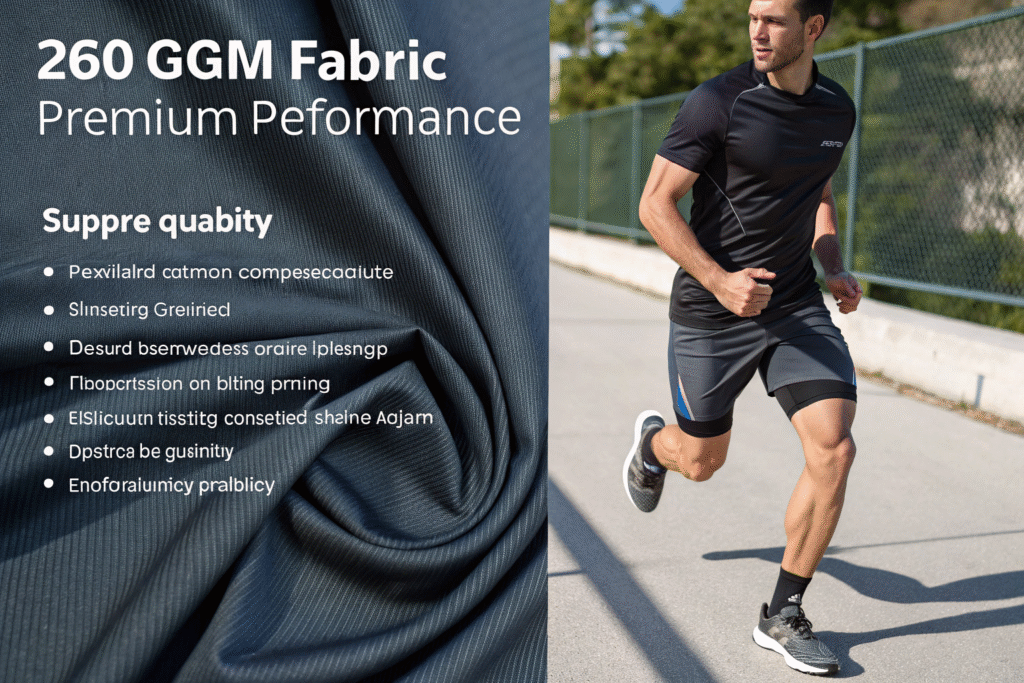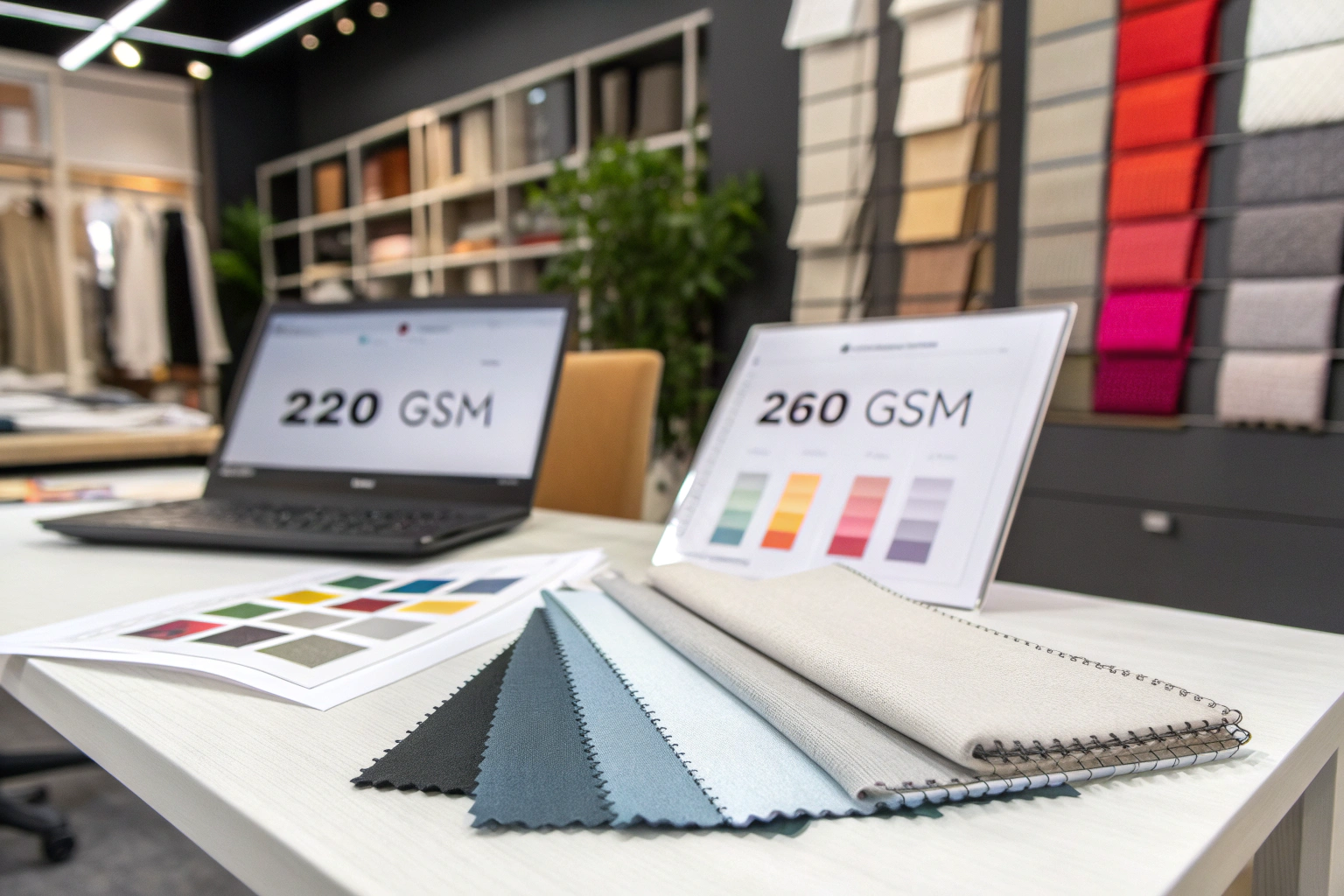As a fabric supplier with twenty years of experience, I frequently consult with American clients about yoga legging fabrics. The choice between 220 GSM and 260 GSM represents a fundamental decision point. This decision directly affects product performance and customer satisfaction. Many buyers initially focus on pricing. However, understanding fabric weight proves essential for delivering true value.
The optimal fabric weight depends on specific use cases. For high-intensity workouts requiring compression, 260 GSM fabric performs better. For daily yoga practice prioritizing lightweight comfort, 220 GSM fabric serves as the ideal choice. Your selection must align with your target market's primary activities.
Let us examine these two fabric weights in detail. This analysis will help you make an informed decision for your next production order.
What Does GSM Mean for Yoga Leggings?
GSM stands for Grams per Square Meter. This measurement indicates fabric density and weight. Essentially, it measures the weight of one square meter of fabric. Higher GSM numbers signify heavier and denser materials. Lower GSM numbers indicate lighter and more breathable fabrics.
For yoga leggings, GSM determines several key characteristics. It influences opacity, durability, and support levels. Choosing the correct GSM ensures your leggings meet customer expectations.

How Do Professionals Measure Fabric GSM?
Our CNAS-certified laboratory uses precision instruments for GSM measurement. We employ calibrated cutting dies and digital scales. A standardized fabric sample is cut and weighed. The weight is then calculated per square meter. We repeat this process multiple times per fabric roll. This rigorous testing ensures consistent quality control across production batches. For moisture-wicking fabric production, we maintain particularly strict GSM tolerances.
Why Should Buyers Understand GSM?
GSM provides crucial insights for product development. It helps predict fabric behavior before production begins. It directly impacts material costs and pricing strategies. Different GSM weights appeal to distinct market segments. Understanding GSM prevents costly specification errors. It enables targeted product positioning.
What Are the Advantages of 220 GSM Fabric?
220 GSM fabric offers lightweight performance characteristics. It provides a second-skin feel during wear. This weight category excels in flexibility and breathability. It represents the preferred choice for standard yoga practice.

Does 220 GSM Fabric Ensure Durability?
Properly constructed 220 GSM fabric delivers adequate durability. The secret lies in material composition and manufacturing techniques. Blends of polyester and spandex create resilient fabrics. Advanced knitting technologies enhance durability further. These fabrics withstand regular yoga practice effectively.
How Does 220 GSM Fabric Perform for Coverage?
High-quality 220 GSM fabric provides sufficient coverage. However, extreme stretching may cause transparency issues. The table below summarizes performance characteristics:
| Feature | 220 GSM Performance |
|---|---|
| Static Opacity | Excellent |
| Stretched Opacity | Good |
| Squat Test | Usually passes |
| Ideal Usage | Daily yoga practice |
Our fabric development team employs specialized techniques to enhance opacity. We use micro-denier yarns and dense knitting patterns.
What Makes 260 GSM Fabric Special?
260 GSM fabric delivers premium performance features. It offers substantial compression and support. This weight category suits intensive athletic activities. It provides a luxurious feel and superior durability.

How Does 260 GSM Enhance Athletic Performance?
The fabric acts as lightweight compression wear. It improves body awareness during exercise. This can lead to better training form. The density provides excellent muscle support. It reduces fatigue during extended sessions. The thickness enhances moisture-wicking capabilities. This keeps athletes drier during intense hot yoga sessions.
Is 260 GSM Fabric Versatile Across Seasons?
260 GSM fabric performs exceptionally well in cooler conditions. It provides natural insulation for muscles. This makes it ideal for air-conditioned studios. For year-round warm climates, it might feel too warm. However, advanced eco-friendly innovations improve breathability. Brushed interior surfaces add warmth without excessive bulk.
How Should You Choose Between 220 GSM and 260 GSM?
The decision requires careful consideration of multiple factors. Your target market's needs should guide the selection. Product positioning and price points also matter significantly.

What Factors Determine the Best Choice?
The comparison table below highlights key differences:
| Feature | 220 GSM | 260 GSM |
|---|---|---|
| Weight Feel | Lightweight | Substantial |
| Best Application | Yoga/Pilates | Gym/HIIT |
| Breathability | Excellent | Good |
| Durability | Good | Excellent |
| Opacity | Good | Excellent |
| Cost Factor | Lower | Higher |
| Compression Level | Light | Firm |
How Does Cost Comparison Influence Decision Making?
260 GSM fabric costs approximately 18% more in raw materials. This affects final product pricing significantly. Your pricing strategy must account for this difference. 220 GSM leggings serve as accessible entry products. 260 GSM leggings justify premium positioning. The perceived value often outweighs the cost difference.
Conclusion
The choice between 220 GSM and 260 GSM involves strategic consideration. For standard yoga practice emphasizing comfort, 220 GSM represents the optimal solution. For intensive workouts requiring support, 260 GSM delivers superior performance. Understanding these distinctions ensures market-appropriate product development.
We invite you to collaborate on your next yoga legging project. Our team provides comprehensive support from yarn sourcing to final production. For detailed consultation, please contact Business Director Elaine at elaine@fumaoclothing.com. Let us create exceptional activewear together.










